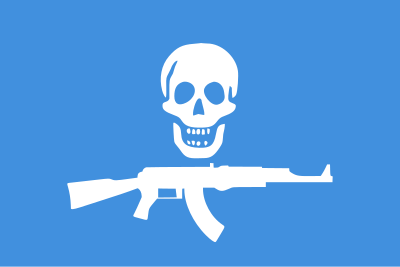
Introduction
The ancient nation of Somalia occupied a pivotal position in the ancient Indian Ocean trading network during Roman times, serving as a crucial intermediary between the Mediterranean world and the riches of Asia. The Somali coast, known to classical geographers as part of the “Land of Punt” and later “Barbarikon“, provided essential ports of call for merchants navigating the monsoon winds between Roman Egypt and India.
Somali traders controlled access to valuable aromatic resins, particularly frankincense and myrrh, which were harvested from the Boswellia and Commiphora trees, respectively, both of which are native to the region. These precious commodities were in enormous demand throughout the Roman Empire for religious ceremonies, medical applications, and luxury consumption. The Periplus of the Erythraean Sea, a first-century maritime trading manual, describes numerous Somali ports including Malao, Mundus, and Mosylon, detailing the goods available and trading protocols.

Beyond aromatics, Somalia served as a transshipment point for goods flowing between Africa’s interior and Asian markets. Gold, ivory, and exotic animals from the African hinterland passed through Somali ports en route to Roman and Indian merchants, while manufactured goods, textiles, and spices from India and Southeast Asia were distributed along the East African coast. This strategic position made Somali city-states wealthy intermediaries in a trade network that connected three continents and sustained the luxury economy of the Roman Empire.
Somalia’s Italian Colonial Years (1889-1960)
Somalia’s Italian colonial period began in the 1880’s when Italy gradually secured much of the territory through a series of protection treaties, with formal control established in 1889 when the Ethiopian Emperor Menelik II and Italy signed the Treaty of Wuchale. In 1885, Italy obtained commercial advantages in the area from the sultan of Zanzibar and in 1889 concluded agreements with the sultans of Obbia and Caluula, who placed their territories under Italy’s protection.
Unlike other European colonial powers, Italy initially struggled to establish effective control over the vast, arid territory. Starting in the 1890s, the Bimaal and Wa’dan revolts near Merca marked the beginning of Somali resistance to Italian expansion, coinciding with the rise of the anti-colonial Dervish movement in the north. The most dramatic upheaval occurred in British Somaliland, where the uprising led by Mohammed ibn Abdullah Hassan (known to the British as the Mad Mullah) took two decades to suppress.
The colonial administration focused primarily on the southern agricultural regions, establishing banana and cotton plantations along the Shebelle and Juba rivers. Effective Italian control remained largely limited to the coastal areas until the early 1920s, and by the end of 1927, following a two-year military campaign against Somali rebels, Rome finally asserted authority over the entirety of Italian Somaliland.
Italian rule intensified under Fascist governance after 1922. A new era of conflict began in Somalia in 1923 with the arrival of the first governor appointed by Mussolini, when a vigorous policy was adopted to develop and extend Italian imperial interests. Under the first fascist governor Cesare Maria De Vecchi (1923–1928), the colonial state planned ambitious policies of agricultural and infrastructural expansion, with the goal of preparing for the military conquest of neighboring Ethiopia.
In 1936, the region was integrated into Italian East Africa as the Somalia Governorate, which lasted until Italy’s loss of the region in 1941 during the East African campaign of World War II. By February 1942, most of Italian Somaliland had been captured by the British, and Italian Somalia was under British administration until 1949.
Following the war, Italian Somaliland became a United Nations trusteeship known as the Trust Territory of Somalia under Italian administration from 1950 to 1960, with legislative elections held in 1956 and 1959. On November 21, 1949, the UN General Assembly adopted a resolution recommending that Italian Somaliland be placed under an international trusteeship system for 10 years, with Italy as the administering authority, followed by independence.
On July 1, 1960, the Trust Territory of Somalia united with former British Somaliland to form the Somali Republic, with Mogadishu as the nation’s capital. The Italian colonial legacy left lasting impacts on Somali society, including architectural influences visible in Mogadishu today, agricultural techniques, administrative structures, and the Italian language, which was an official language during the Fiduciary Mandate and in the first years of independence, with the majority of Somalis having some understanding of the language by 1952.
The Fall of Siad Barre
Beginning with the 1969 seizure of power by Siad Barre, the country spent some twenty-one years under his iron-fisted dictatorship, until growing resistance to his military junta during the 1980s, eventually boiling over into all-out civil war. From 1988 to 1990, the Somali Armed Forces engaged in combat against various armed rebel groups, including the Somali Salvation Democratic Front in the northeast, the Somali National Movement in the northwest, and the United Somali Congress in the south.

The rebellion effectively began in 1978 following a failed coup d’état, when Barre began using his special forces, the “Red Berets,” to attack clan-based dissident groups opposed to his regime. The regime’s brutality intensified in 1988 with systematic human rights abuses and genocide against the Isaaq clan, resulting in up to 200,000 civilians killed and 500,000 refugees fleeing to Ethiopia.
In response to these humanitarian abuses, Western aid donors cut funding to the Somali regime, resulting in a rapid “retreat of the state,” accompanied by severe devaluation of the Somali Shilling and mass military desertion. On January 27, 1991, pressure from the United Somali Congress and other groups ultimately forced President Barre to flee Somalia, ending his dictatorship and plunging the country into civil war.
Operation Gothic Serpent and the Battle of Mogadishu
Following the United States’ 1992 intervention in Somalia in “Operation Provide Comfort“, to protect food distribution to the population, a shift began under the newly-elected Clinton administration, in mid-1993. This shift led to the United States leading what became known as “UNOSOM II” (United Nations Operation in Somalia II), an ill-advised attempt at forcible “nation-building“, with foregin nations attempting to impose “peace and unity” in an internally-warring nation at gunpoint.
Operation Gothic Serpent, launched in August 1993, represented the United States’ most significant military intervention in Somalia during the height of the civil war. The operation aimed to capture faction leader Mohamed Farrah Aidid, whose forces had killed 24 Pakistani peacekeepers and were disrupting humanitarian aid distribution.
The mission culminated in the October 3-4, 1993 Battle of Mogadishu, when U.S. Army Rangers and Delta Force operators attempted to capture key Aidid lieutenants in the city center. The operation went catastrophically wrong when two Black Hawk helicopters were shot down by rocket-propelled grenades, trapping American forces in hostile territory.

During the 15-hour firefight that followed, 18 American soldiers were killed and 73 wounded, while Somali casualties numbered in the hundreds. The graphic images of dead American servicemen being dragged through Mogadishu’s streets shocked the American public and led directly to U.S. withdrawal from Somalia in March 1994.
The incident profoundly influenced U.S. foreign policy for years, contributing to American reluctance to intervene in subsequent humanitarian crises, including the 1994 Rwandan genocide. The battle became emblematic of the challenges facing international intervention in failed states.
The Return of the Terror State
Somalia now stands on the precipice of complete state collapse as Al-Shabaab militants have encircled the capital of Mogadishu in what analysts are calling the most serious threat to the government since the height of the civil war in the 1990’s. The terrorist organization’s lightning offensive, launched in February 2025, has shattered the fragile gains made by international forces over the past decade and returned the specter of jihadist control to the Horn of Africa.

The scale of Al-Shabaab’s resurgence cannot be overstated. From launching coordinated attacks across multiple provinces to capturing strategic towns within 30 kilometers of Mogadishu, the group has demonstrated a tactical sophistication and operational capability that has caught both the Somali government and international partners off guard. What began as seemingly isolated assaults on February 20, 2025, has evolved into a systematic campaign to strangle the capital and force the collapse of the federal government.
The terrorists have employed a multi-pronged strategy combining conventional military tactics with asymmetric warfare, utilizing car bombs, infiltration operations, and terror attacks to maximize psychological impact while minimizing their own exposure to counterstrikes. Their capture of Adan Yabaal on April 16th marked a particular turning point, as this strategic town had served as a crucial staging area for government counteroffensives.
A Regional Terror Network
Al-Shabaab’s current offensive represents more than a localized insurgency; it exemplifies the group’s evolution into a transnational terrorist organization capable of projecting power far beyond Somalia’s borders. This transformation was starkly illustrated in the January 15, 2019 attack on Nairobi’s DusitD2 hotel complex, which demonstrated Al-Shabaab’s expanding operational reach and recruitment capabilities.
The DusitD2 attack, marking the rise of “Obiwan Nairobi“, was particularly significant as it marked a strategic shift in Al-Shabaab’s methodology. Unlike previous operations that relied heavily on ethnic Somali operatives, the five-man terrorist cell that carried out the Nairobi assault included Kenyan nationals of non-Somali descent, including a suicide bomber from the coastal city of Mombasa. The 20-hour siege resulted in 21 deaths and 28 injuries, representing Kenya’s worst terrorist attack in four years.
What made the DusitD2 attack particularly alarming for counterterrorism officials was the extensive planning involved. Security footage revealed that Al-Shabaab operatives had been conducting surveillance of the target since at least December 2016, demonstrating a level of operational security and long-term planning that suggested significant organizational sophistication. The attack also revealed the group’s ability to recruit from within Kenya’s security establishment, as one of the attackers was identified as the son of a Kenyan military officer.
The Collapse of International Strategy
The current crisis exposes the fundamental failure of the international community’s approach to Somalia over the past two decades. The transition from the African Union Mission in Somalia (AMISOM) to the African Union Transition Mission in Somalia (ATMIS), and subsequently to the African Union Support and Stabilization Mission in Somalia (AUSSOM), has created critical security gaps that Al-Shabaab has ruthlessly exploited.
The timing of Al-Shabaab’s offensive was no coincidence. Launched just weeks after the ATMIS-to-AUSSOM transition on January 1, 2025, the attacks capitalized on coordination problems, reduced troop levels, and uncertain funding for the new mission. The group’s ability to “launch around 50 percent more attacks per month in 2025 compared to its 2024 average” demonstrates how effectively they have exploited this institutional vulnerability.
Compounding these challenges is the reduction in U.S. support under the Trump administration. American assistance to Somalia’s elite Danab special forces has been curtailed, including the cessation of salary supplements that had doubled soldiers’ pay from $200 to $400 per month. This has severely impacted morale and combat effectiveness of the only units that had previously proven capable of matching Al-Shabaab in direct confrontation.
The Siege Strategy
Al-Shabaab’s current approach reflects lessons learned from recent insurgent successes worldwide, particularly the Taliban’s 2021 conquest of Afghanistan and the Syrian opposition’s rapid advance on Damascus in 2024. Rather than attempting a direct assault on Mogadishu that would allow government forces to concentrate their remaining strengths, the terrorists have opted for a siege strategy designed to slowly strangle the capital.
By controlling the major roads and supply routes into Mogadishu, Al-Shabaab can gradually increase pressure on the city’s three million inhabitants while conducting a psychological warfare campaign through bombings, mortar attacks, and assassination attempts. The March 18th bombing of President Hassan Sheikh Mohamud’s motorcade, which killed four people while narrowly missing the president himself, exemplifies this strategy of creating a climate of terror while systematically degrading government capabilities ([source]()).
International Response and Turkish Gambit
As traditional Western partners have reduced their commitments, Somalia has increasingly turned to Turkey for military assistance. Ankara has announced plans to nearly triple its deployment to 800 soldiers, including 300 commandos and 200 drone operators, while also securing lucrative contracts for port and airport operations in Mogadishu. This represents a significant shift in regional power dynamics as Turkey seeks to expand its influence in the Horn of Africa.

However, Turkey’s intervention faces the same fundamental challenges that have plagued international efforts in Somalia for decades: the inability of foreign forces to address the underlying governance failures that have made the country vulnerable to extremist exploitation in the first place.
The Looming Catastrophe
Current trajectory suggests Somalia is heading toward a humanitarian catastrophe of unprecedented proportions. With nearly 6 million people already requiring humanitarian assistance and 4.6 million facing acute food insecurity, the collapse of government control in Mogadishu would create a crisis that could destabilize the entire Horn of Africa.
Al-Shabaab’s vision extends far beyond Somalia’s borders. The group has never concealed its ambition to establish a caliphate encompassing all of East Africa, making their current advance on Mogadishu not just a threat to Somalia but to regional stability. With their demonstrated capability to conduct sophisticated attacks like the DusitD2 operation and their growing recruitment networks across the region, Al-Shabaab’s success in Somalia could serve as a launching pad for expanded terrorism throughout East Africa.
The international community faces a closing window to prevent a complete collapse of the Somali state. Without decisive action to reinforce Mogadishu’s defenses and address the fundamental governance challenges that have enabled Al-Shabaab’s rise, the world may soon witness the emergence of the first jihadist-controlled capital in Africa since the Taliban’s return to Kabul.
Somalia may now be a failed state, but the global community is at least trying to backstop the country…for the moment. But, in the current calculus of war around the world, the possibility of Somalia collapsing to Al-Shabaab, like Afghanistan to the Taliban, the possibility exists of a return to the “old days” of Somali piracy, up until 2012. This time, however, there are no easy answers for Western nations who rely on commercial vessels passing Somalia, but who – unlike post-2012 – are unable to juggle all the necessary theaters, making ignoring Somalia a very attractive, short-term proposition, in spite of the potential levels of economic damage.
This is also known as “whistling past the graveyard.”








